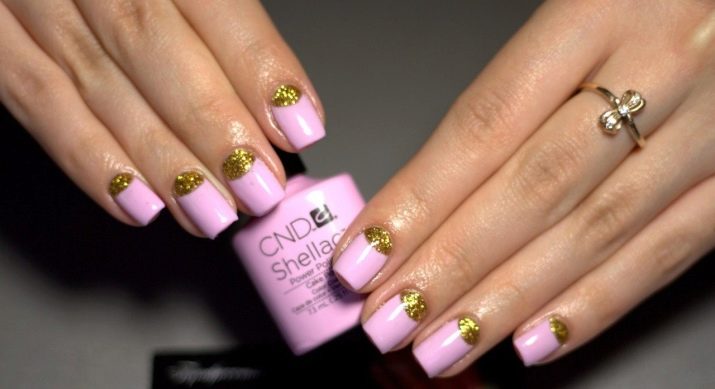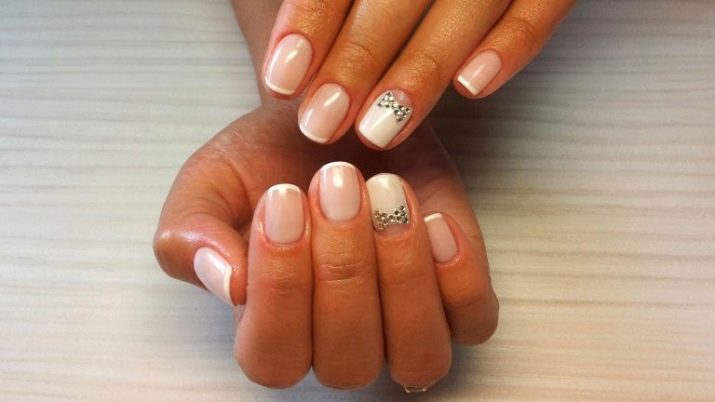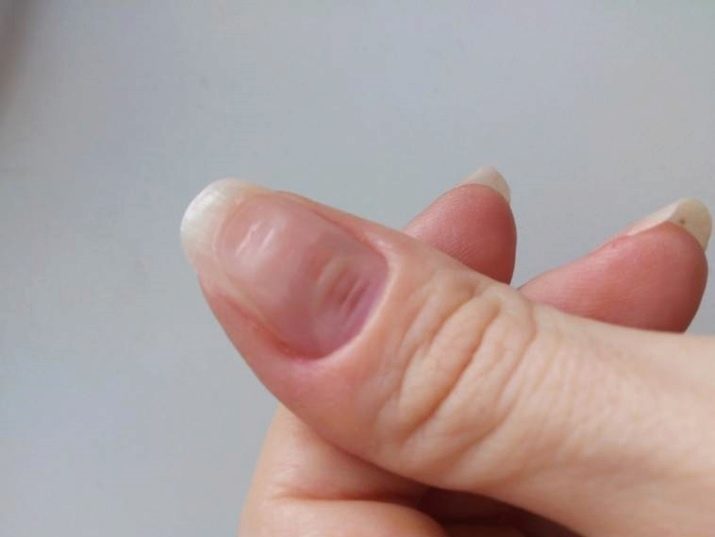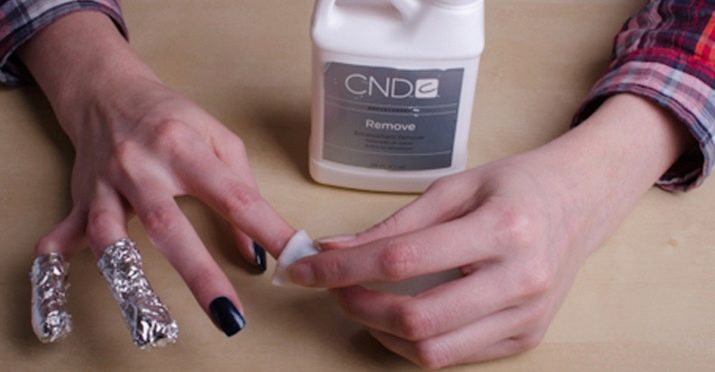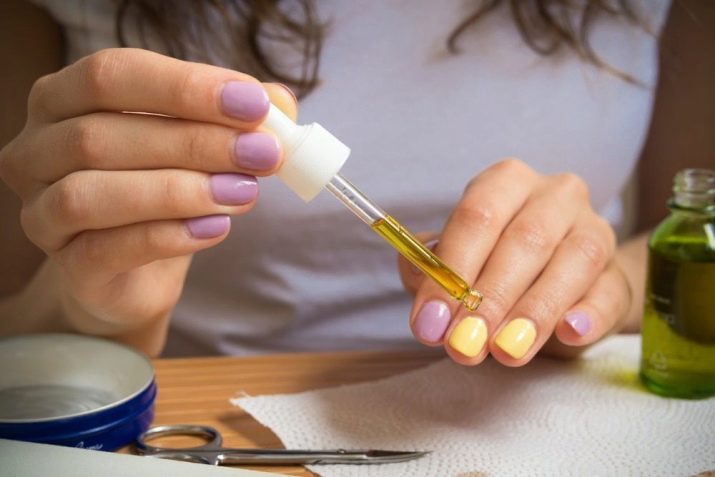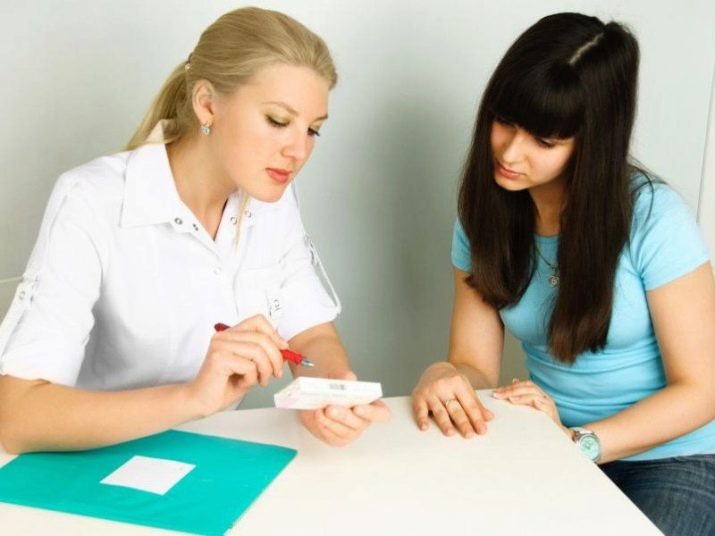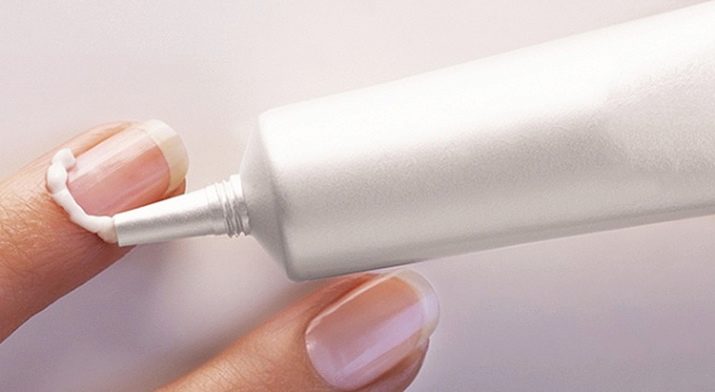Decorative coatings for nails today are presented in a huge range, one of the most popular options is shellac. This article will tell you more about whether this product is harmful to nails.
Features of use
Shellac is a material used by many specialists in manicure when creating designer décor. Every woman wants to boast a beautiful manicure. Beautiful and well-groomed nails are a reason for pride. Unfortunately, decorative varnishes, which are sold in supermarkets and ordinary cosmetic stores, quickly erased. Shellac can be attributed to the materials, which for a long time remains on the nail plates.
Shellac also has many other benefits.
- It is suitable for people who have rather thin nail plates. This method of manicure design is used by women whose nails often exfoliate and break. With increased fragility of the nail plate to achieve the desired length can be extremely difficult.
- The resistance of shellac depends on many factors. Of course, frequent washing up or cleaning an apartment without protective gloves can reduce the period of “wearing” such a decorative coating. If you carefully monitor your hands and use gloves during cleaning, you can significantly extend the preservation of such a decorative coating on your hands. In some cases, it can be “carried” up to 2.5-3 weeks.
Shellac is an excellent coating that is suitable for people who have dull nail plates. This material gives them a beautiful and quite bright shine. Even an ordinary jacket made with such material looks very impressive and catchy. In this case, the nail plate shines, and his hands look very well-groomed.
- A large selection of colors is another advantage of shellac. Manufacturers of this decorative coating offer a huge variety of different shades. Manicurists combine them, which allows to achieve interesting results. If you wish, you can choose neutral tones or indulge yourself with something bright and unusual.
- Many beauties choose this material for nails, as it practically does not spoil the nail plate. Of course, it does not benefit the body, but it does not destroy the nails. In this material there is no formaldehyde - a component that can harm the nail plates. It is no coincidence that manicure with the use of shellac today is chosen more and more often.
Harm to health
- Shellac is not such a harmless material as it may seem at first glance. Covering them with nails can do some harm to the body. In order to understand how this material harms the nails, you need to understand how to perform a manicure with its use. With this variant of manicure, the processing of the nail plate is carried out quite intensively. It can lead to traumatizing the nail, which in the future may reflect badly on its growth.
It should be noted that such damage, as a rule, is applied to the nails with poor-quality manicure.
If this procedure is performed by an inexperienced or unqualified specialist, then this can lead to a violation of the growth of the nail. During the processing of the nail plate is extremely important to use clean tools that have been previously disinfected. Sometimes after applying shellac, yellow or dark spots appear on the nails. An infection in the nail leads to their appearance during poor-quality processing of the plate.
- Cover with shellac only need healthy nails. Some women use this material to mask various changes that appear on the nail plates. For example, through such a decorative coating, they try to “mask” the yellowing of the nail plates or the appearance of white stripes on them. However, if such changes appear, then in this case you need to consult a doctor, and only then resort to covering nails with shellac.
During the "socks" of such a manicure various infectious diseases of the nails are not excluded.
Shellac rather tightly “engages” with the nail, causing the oxygen supply to the nail plate to decrease. Such changes create a greenhouse effect. Also, this material is exposed to temperature. For example, frequent washing of hands in hot water can cause small cracks to appear on the nails. They can get pathogenic microbes, which further provokes nail disease.
Shellac - quite resistant material. In order to remove it from the nail plates, special tools are used. To remove this material by means of orange sticks at home will not work, as this can lead to severe injury to the nail plate.
Preparations that are used to remove this decorative material for nails, have a rather aggressive chemical composition. They also often contain acetone. This substance can dry out the nail plate, leading to loss of natural shine and even strong fragility.
- Frequent procedures using shellac require and procedures for the restoration of the cuticle. So, in order to be able to “wear” such a manicure a little longer, the shellac applied to the nails must be thoroughly dried. For this purpose, special lamps are used, which act by means of ultraviolet. The rays of this spectrum, as a rule, do not cause any discomfort in a person. However, if you constantly dry your nails with such a lamp, you can cause severe dryness and, to a greater extent, the cuticle. If after carrying out such a manicure not to fully care for the nail cuticle, this may result in hands looking untidy. To moisturize the cuticle is better to use special cosmetic products. They perfectly care for this delicate area, contributing to its recovery.
- Ultraviolet rays lamp, which is used for drying nails, can affect not only the nail plate, but also on the surrounding skin. Women with a high oncogenic risk of developing skin diseases should take this feature into account. Before carrying out such a procedure, it is better for them to apply sunscreen on their hands. Moreover, if someone from close relatives were diagnosed with melanoma (skin cancer), then in this case, before often applying shellac on the nails, it is better for such women to consult a doctor.
- Shellac is a chemical material that in some people can contribute to the development of allergic reactions. It is worth noting that allergies to this decorative coating are not so common, but isolated cases continue to be registered. Women with allergic diseases and individual sensitivity to various chemicals should consult a doctor before performing this procedure.
After several treatments with shellac, it takes time to restore the nails. For this you can use both cosmetic products and traditional medicine. The term of their use depends on how badly the nail plates are damaged. In some cases, nail restoration can take even several weeks. During the restoration of the plates should not forget about the power cuticle.
Specialist reviews
Many manicurists like to work with shellac. They note that this material looks pretty good and keeps on the nail plates. In this rich color palette helps to create different design options. It is ideal for covering even fairly loose plates.
Some specialists in manicure say that they do not like this material, since in some women it can lead to the development of thinning nail plates. And in this case it is required to conduct a comprehensive recovery.
See how the gel varnish differs from shellac in the next video.

